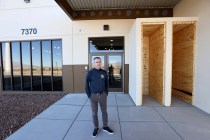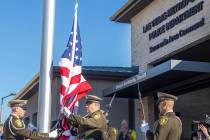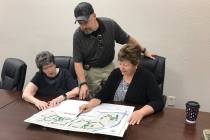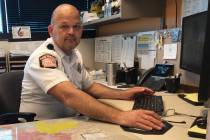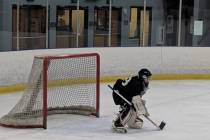Waste not, want not (water) working for area golf courses
More than 900 acres of grass have been removed from Southern Nevada golf courses in the last 12 years, conserving more than 2 billion gallons of water. Now, that’s big. Moreover, those numbers are especially notable when you consider that we live in a desert and a sector of the country that has been suffering from a lingering drought for more than a decade.
Add into the equation the fact that a good percentage of the 40 million annual visitors to Las Vegas come here primarily to play golf on some of the finest courses in the country. Irrespective of 24-hour gambling, Las Vegas is a resort city in every sense and especially so because of its weather, hotel accommodations, restaurants, shopping amenities and golf courses.
As with any resort, considerable emphasis is put on golf, which is best evidenced by the numbers of visitors, especially from northern climes during the cold weather months. Hang around McCarran International Airport for a while and watch how many of those visitors arrive with golf clubs.
Yet the quality of golf has not diminished as a result of grass removal from all golf course areas, except for fairways.
“The amount of grass that has been taken out of golf courses since we began our water conservation program is equivalent to the amount of turf that would cover nine regulation golf courses,” said Patrick Watson, conservation services administrator at the Southern Nevada Water Authority.
“About 50 golf courses have participated in our water conservation program. That includes just about all the courses in the valley, with the exception of two or three smaller facilities, where the amount of water used is almost insignificant.”
But the removal of golf course grass has not ended by any means.
Angel Park Golf Course, 100 S. Rampart Blvd., consisting of two regular courses, a 12-hole executive course and a nine-hole putting course, will be replacing another 6.5 acres of grass along fairway perimeters and common areas with water-efficient southwest foliage. Located just opposite Summerlin, Angel Park already has removed 75 acres of turf in the last decade, according to the water authority.
Sun City Summerlin has two regular courses and an executive course.
“We have removed 85 acres of grass over the years, and we’ll be removing 6 more acres of grass this year,” said David Steinman, president of the Sun City Summerlin Board of Directors and chairman of the age-restricted community’s Golf Oversight Committee.
Steinman said the three Sun City Summerlin courses will be approaching 100 acres of turf removal after eliminating another 6 acres of grass in the next fiscal year.
“We have been very active participants in the water authority’s conservation program since it was initiated,” he said.
“We have 1,200 lots along our golf courses. When the developer built Sun City, they put in wall-to-wall grass and sold the lots at a premium.”
Steinman said those areas are being replaced with southwestern landscaping.
“In the meantime, we’re saving lots of money on our water bills,” he said.
Watson said the water authority began its water conservation program in 2003 by offering rebates to those who remove grass. Under the program, the water authority pays $1.50 per square foot of grass removal for the first 5,000 square feet, then $1 for every additional square foot.
“As of the end of 2013, we paid out about $25 million in rebates for golf course conservation,” he said. “Golf courses throughout Southern Nevada have been very responsive to our request to remove grass. There’s no doubt that this has been a very successful program.”
He explained that golf courses use about 55 gallons of water a year per square foot.
“Golf course watering is very high-tech,” he said. “The people who operate the courses have professional irrigators on their staffs. Even though they’re using recycled water, it’s still very expensive. It fact, it’s probably the most expensive item on golf course budgets.
“Courses even maintain weather stations. They have to be very scientific and technological in their day-to-day maintenance.”
Ironically, while golf course operators look for rain to ease their watering problem, they nevertheless dread the thought of inclement weather reducing the amount of play.
Herb Jaffe was an op-ed columnist and investigative reporter for most of his 39 years at the Star-Ledger of Newark, N.J. His most recent novel, “Double Play,” is now available. Contact him at hjaffe@cox.net.








